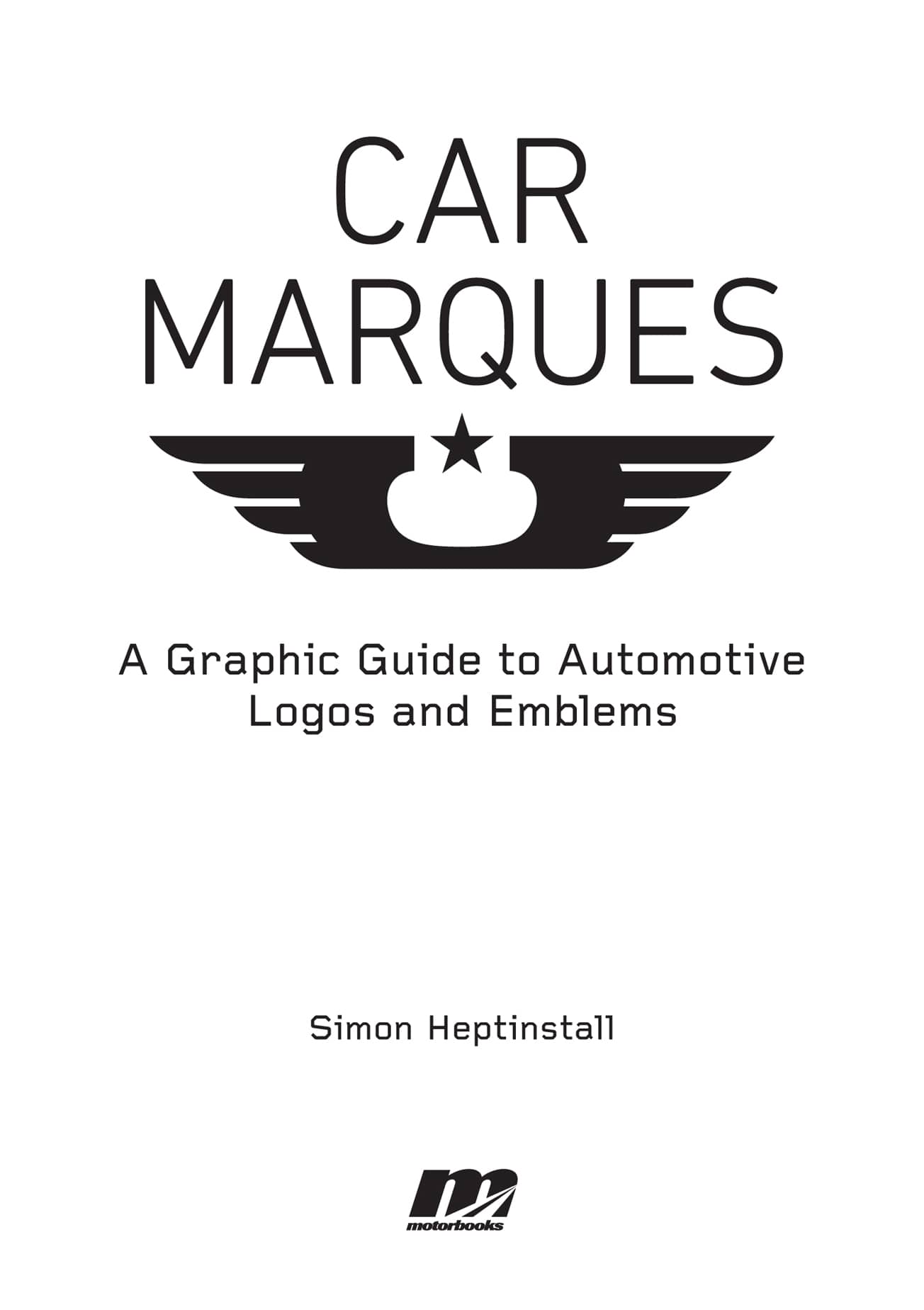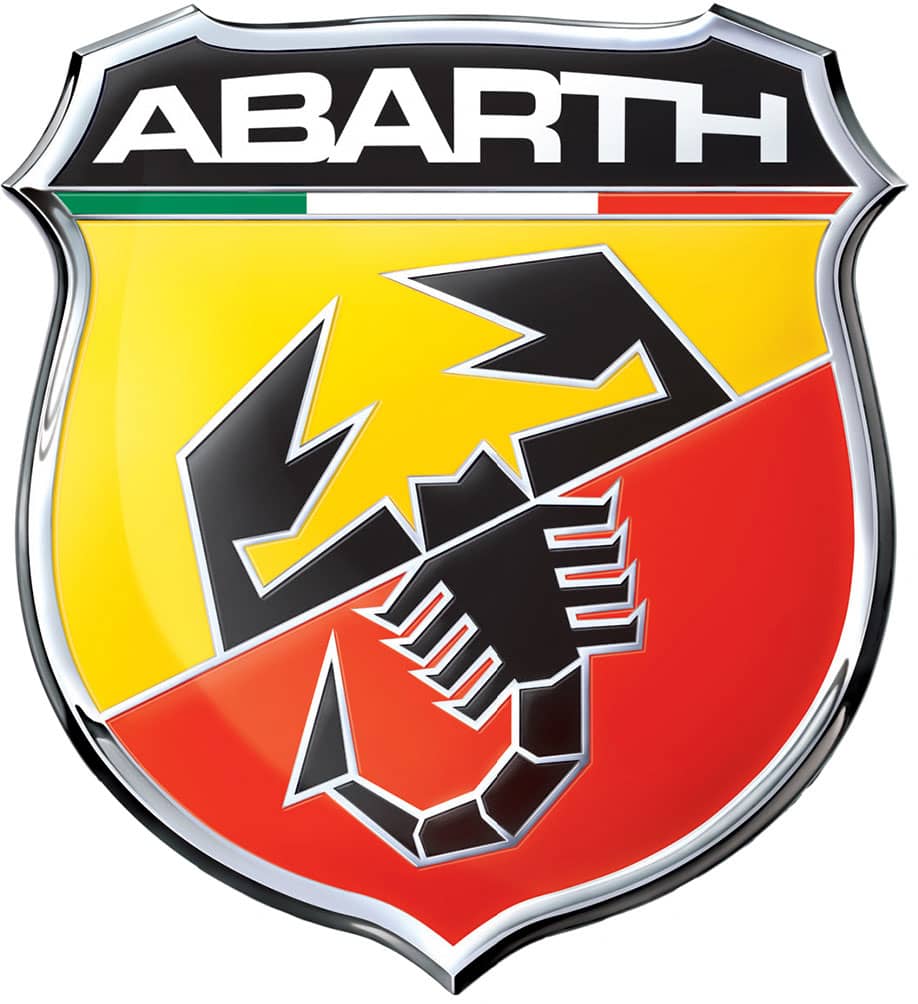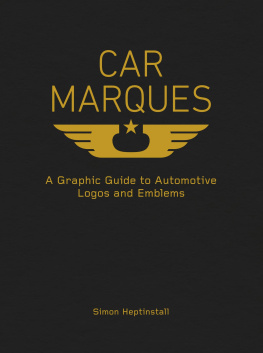Simon Heptinstall - Car Marques: A Graphic Guide to Automotive Logos and Emblems
Here you can read online Simon Heptinstall - Car Marques: A Graphic Guide to Automotive Logos and Emblems full text of the book (entire story) in english for free. Download pdf and epub, get meaning, cover and reviews about this ebook. year: 2018, publisher: Motorbooks, genre: Science. Description of the work, (preface) as well as reviews are available. Best literature library LitArk.com created for fans of good reading and offers a wide selection of genres:
Romance novel
Science fiction
Adventure
Detective
Science
History
Home and family
Prose
Art
Politics
Computer
Non-fiction
Religion
Business
Children
Humor
Choose a favorite category and find really read worthwhile books. Enjoy immersion in the world of imagination, feel the emotions of the characters or learn something new for yourself, make an fascinating discovery.
- Book:Car Marques: A Graphic Guide to Automotive Logos and Emblems
- Author:
- Publisher:Motorbooks
- Genre:
- Year:2018
- Rating:5 / 5
- Favourites:Add to favourites
- Your mark:
- 100
- 1
- 2
- 3
- 4
- 5
Car Marques: A Graphic Guide to Automotive Logos and Emblems: summary, description and annotation
We offer to read an annotation, description, summary or preface (depends on what the author of the book "Car Marques: A Graphic Guide to Automotive Logos and Emblems" wrote himself). If you haven't found the necessary information about the book — write in the comments, we will try to find it.
Car Marques: A Graphic Guide to Automotive Logos and Emblems — read online for free the complete book (whole text) full work
Below is the text of the book, divided by pages. System saving the place of the last page read, allows you to conveniently read the book "Car Marques: A Graphic Guide to Automotive Logos and Emblems" online for free, without having to search again every time where you left off. Put a bookmark, and you can go to the page where you finished reading at any time.
Font size:
Interval:
Bookmark:

As this book was being written, Mercedes and AMG unveiled a futuristic new supercar to the worlds press. Most of the motoring journalists assembled at the 2017 Frankfurt International Motor Show event agreed that the car that was revealed, the Project One, is an extraordinary machine.
The new Mercedes is a multimillion dollar Formula One car for the road, featuring a very similar engine to three-time world champion Lewis Hamiltons racing car. Its the sort of machine that seems completely divorced from the cars the rest of us mere mortal car enthusiasts see and drive every day. Its more like a flying saucer. Project Ones high-tech, race-bred components seem to have more to do with science fiction than everyday motoring... apart from one.
Firmly fixed to the lightweight carbon panel forming the steeply raked aerodynamic hood of the Project One is a component shared with humble family hatchbacks, estate cars, and even tatty commercial vans across the world. It is one of the worlds most familiar commercial logos: the Mercedes three-pointed star.
This component demonstrates that even a millionaires supercar needs to be identified. In this instance, Mercedes wants the world to know that Project One represents the same brand values and image as the humble A-Class family hatchback and the Vito panel van.
It announces to the world that this is just one of the examples of what Mercedes can produce, and that some of the companys technological magnificence is shared with the rather less technically advanced products from the same company. Someone buying a lesser product with the same badge will feel part of the club, elevated by the prestige of the Project One supercar.
The new Mercedes owner wants everyone else to see exactly what his or her money has been spent on. The simple hood badge has helped create a brand identity that can be a major selling point.
A cars badge may be a component that many of us rarely think about. It may be a simple stamped piece of chrome or plastic glued or plugged into place. But this vital part of a car fulfills several major functions: the car logo is part advertisement, part decoration, and part identity tag.
Identity tag? Well, everyone from marketing gurus to amateur car-spotters likes to be able to tell one car from another. The manufacturers logo is one of the most important ways to do this, and not just for supercars. Try identifying any vehicle where the emblem and name have been lost or removed. Could you really tell one modern hatchback from another with no badge to help you? Even experienced motoring journalists can find familiar cars hard to name without their logos and company branding.
The simple, long-standing emblems and the successful companies behind them usually demonstrate how its done. Volkswagen and Ferrari are excellent examples of this. The VW symbol is as old as its first car, the iconic Beetle, and Enzo Ferraris famous prancing horse has adorned his cars since the birth of the company. Both companies have done rather well with a simple but unchanging brand identity. And one thing is for sure: neither of these world-famous badges is ever likely to change.
The stories of how these brand emblems have evolved along with the vehicles give a glimpse into how the world of marketing and design has changed over the last century.
Each badge has a different story to tell.
Some of the earliest car badges were simply the name of the owner of the company written in a script, as if the owner had personally signed the hood of his vehicles. Some have origins dating back into history, far beyond the birth of the motor car. For example, Vauxhalls griffin has its roots in the heraldic device of an English medieval knight, while the Pontiac emblems link back to a Native American chieftain who fought against the British colonialists almost three centuries ago.
Often a car manufacturers badge has evolved through more than a century of the ideas, dreams, and skills of entrepreneurs, designers, artists, and businessmen. The Cadillac badge, for example, has been gradually refined over the last 100 years until it almost seems an abstract piece of art. This might seem in keeping with the companys premium brand image. In reality, however, the badge is a graphic simplification of the design chosen by the pioneering businessmen who established the company in 1902.
Other marques have stuttered through a sequence of wildly different badges and consequently struggled to build a brand identity. Perhaps the Oldsmobile marque may have prospered a little longer if it hadnt confused customers by switching between florid crests, winged spurs, ringed globes, and space rockets.
This book is a great way to discover and understand the world of car badges. Its a collection of the best-known, most common, and most interesting motoring emblems. More than 90 badges of motoring marques, both current and defunct, are examined in detail. They range from the simple, such as Jeep or MG, to the elaborate, like Alfa Romeo or Porsche.
The combination of color illustrations and black-and-white line art provides a fascinating chance to see the badges isolated from the cars to appreciate the design and marketing concepts behind them. Insightful annotations are provided for the line-art version of the badges, picking out the details that make each badge unique and that are relevant to the origins of the brand. Beneath each badge, the key colors are indicated with swatches that provide both the CMYK color breakdown for print specification, and the closest possible match to the relevant hex code for on-screen use in websites.
The details of the badges sometimes reveal intimate details about how a company works: Aston Martins winged badge, for example, is handmade by jewelers in the heart of the city of Birmingham, England, while one of the worlds most expensive car brands, Koenigsegg, uses a badge that was designed by the founders school friend.
In addition, the book offers a chance to read about the stories behind these extraordinary badges, such as the famous Rolls-Royce Spirit of Ecstasy hood figurine, the flamboyant emblem that was modeled on the secret lover of a motoring-mad aristocrat.
Sprinkled among the badges are two types of feature spread. The first shows the historical evolution of certain badges, including Cadillac, Fiat, and Vauxhall. The second profiles some of the great figures of the car world, figures who shaped the automotive industry and also had a hand in the design of some iconic car badges.


FOUNDED
March 31 1949 (Bologna, Italy)
FOUNDER(S)
Carlo Abarth
YEARS OF OPERATION
1949present
BEST-KNOWN MODELS
Fiat-Abarth 500, Abarth 595, Abarth 124 Spider
Our first marque is arguably one of the most striking. Abarth was founded by the Austrian-Italian engineer and designer Carlo Abarth. Abarth had previously been involved in motorsports, particularly motorcycle racing, in which he won five European Championship titles, until serious accidents in 1930 and 1939 forced his retirement from the sport. After starting out as a racing team that developed parts for production cars, the company relocated to Turin, Italy in April 1951, where its long-running relationship with Fiat began.
Font size:
Interval:
Bookmark:
Similar books «Car Marques: A Graphic Guide to Automotive Logos and Emblems»
Look at similar books to Car Marques: A Graphic Guide to Automotive Logos and Emblems. We have selected literature similar in name and meaning in the hope of providing readers with more options to find new, interesting, not yet read works.
Discussion, reviews of the book Car Marques: A Graphic Guide to Automotive Logos and Emblems and just readers' own opinions. Leave your comments, write what you think about the work, its meaning or the main characters. Specify what exactly you liked and what you didn't like, and why you think so.












